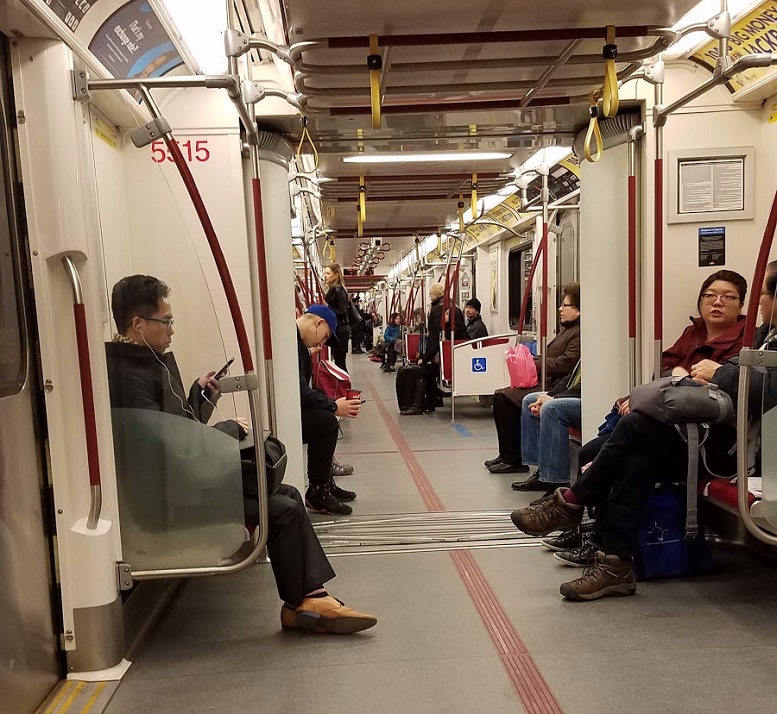Between the recent A train derailment and Governor Cuomo’s declaration of a state of emergency, you probably won’t be surprised that the American Public Transit Association did not name the MTA its 2017 Transit System of the Year. Instead, they chose the Toronto Transit Commission. The Toronto Star reports:
“[TTC CEO Andy] Byford said that the TTC had been recognized for the five-year modernization plan that it embarked on in 2013, a year after he took the helm of the commission.
“Since then a huge amount of effort has been expended and a huge amount has been achieved,” he said, asserting that the TTC is now “cleaner, friendlier, more punctual, and more reliable” than it was five years ago.
He said that in addition to improving customer service, the TTC is carrying out “megaprojects” like installing a new subway signaling system, rolling out the Presto fare card, deploying a new streetcar fleet, and building the Toronto-York Spadina Subway Extension, which is set to open later this year.
TSTC staff analyst Ryan Hall recently visited Toronto. The city, Canada’s largest by population, is served by a number of transit modes that shuttle residents and visitors across the lakeside metropolis. First time visitors will likely gravitate towards the city’s subways and streetcars, but TTA also provides bus, ferry, and commuter rail service.
Unlike most American cities, Toronto’s original streetcar network — the largest in North America — remains mostly intact. Today, it boasts the largest streetcar network in North America–both by ridership and sheer size. Most routes operate 24 hours a day and provide a vital east-west link and connections to commuter rail and subway lines.

Like the MTA, the TTC currently runs a mix of old and new rolling stock, but is currently in the process of adding newer streetcar vehicles to its fleet. One area where the TTC differ from the MTA is on fare collection. The TTC is rolling out a new smart card fare payment system, and in 2015 the agency implemented all door boarding across its entire streetcar network — something we’re still waiting to see across the MTA’s fleet of buses. Newer streetcars even came equipped with a fare machine on-board, so even if customers who are running late can hop on board and pay at the machine while riding to their destinations.
Complementing the streetcar network, the Toronto subway system serves to move passengers from farther-flung neighborhoods into the city’s core. While relatively small by New York standards, the province of Ontario and Canada’s federal government have committed to expanding the system with the promised extension of Line 1 northward towards the neighborhood of York as well as a new crosstown light rail line projected to open in 2021.

TTC’s newest subway rolling stock includes open gangways, like the cars that are scheduled to enter service on the New York City subway in 2023. The space between cars provides more space for passengers and helps distribute passengers more evenly throughout trains.
With its vast but aging streetcar network, along with a growing subway system, Toronto continues to be an interesting testing ground for urban transit in North American. Like the MTA, they’re struggling with outdated infrastructure, like streetcars that run in mixed traffic. But it’s clear from APTA’s recognition that they have their priorities in order. Certainly that’s something our region’s transit providers should take note of.


First, a Grammar Grumble to the author: “it’s” means “it is”; the possessive word is “its” – without an apostrophe, like “yours”, “hers”, “ours”, etc.
I spent some very pleasant days in Toronto several years ago and was very impressed with its ( haha!) transit operations compared to various systems I’ve used in this country. We could learn a lot from practices like adequate funding, cleanliness, multi-modality, and planning that emphasizes improving infrastructure as an early, integral stage of development projects rather than as playing catchup with demand afterwards.
You also missed an opportunity (not sure if you had the time!) to ride the excellent system of bus routes. I grew up in suburban Toronto and the thing that kept me from rushing to drive at 16 was my local bus route, which ran 10 minutes or better well into the night. When I visit US cities I’m appalled at how bad transit in the suburbs is compared to Toronto. The subway system is limited but a frequent grid of suburban buses has achieved impressive ridership, even without rapid transit expansion.